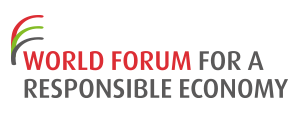BMA ERGONOMICS makes profit with Circular Economy: the example of a task chair’s lifecycle
4. Environment
Waste management



Context
Therefore, the firm started to make office chairs using ergonomic principles and became a major specialist.
BMA Ergonomics is a major market player with more than 800,000 users of Axia chairs in Western Europe. Axia office chairs are developed and assembled in Zwolle, in the Netherlands. Nowadays, the group have 120 employees working in sales offices in the Netherlands, Belgium and Germany and sells over 60,000 chairs per year.
Objectives
- Reaching customers’ satisfaction
- Linking revenues, technology and sustainability: selling good products at a reasonable price
- Improving the seated posture at work
- Reducing the CO2 emission and using raw materials
- Deleting waste and having a closed circle of materials (sell, use & recycle)
APPROACH
First, it begins with the project of new head office in Holland of Royal HaskoningDHV. BMA Ergonomics was charged to assist them in the respect of the German energy efficiency policy called “Green Deal“. As such, BMA uses a circular economy approach. The challenge is to reduce the number of work places from 795 to 405 (= 20% less desks than people).
Hence, BMA Ergonomics has to find the best project to help Royal HaskoningDHV, through the following steps:
- Refurbishing of 365 chairs with new cushions, quality check and renewed warranties
- Taking back 430 chairs for 50 euros cash back and selling them as second-life chairs
- Selling new 40 Axia Smart chairs featuring new design and latest technology
Second, BMA Ergonomics committed to create a long-term relationship with its customers thanks to its “Second Life” policy.
The theory is that most office chairs are on average decommissioned after ten years. However, many parts last for much longer. For this reason, the BMA chairs can be returned after years of intensive use and all parts are serviced and either replaced or reused as required. In the end, the chair is then returned to the user as new.
The goal is to move from a ten-year life cycle guaranteed today a twenty-year life cycle by 2020.
Best Practice spotted by the World Forum for a Responsible Economy 2014.
CONTRIBUTION TO COMPANY PERFORMANCE
- Customer satisfaction and loyalty: re-ordering from existing clients
- Employees’ involvement
- Higher profit with a circular economy than with a linear one
Benefits
- Reduction of raw materials use: 69% savings
- Reduction in the CO2 emissions: 62% savings
- A 100% recyclable product composed of 67% recycled contents
- Workforce
- 120
- Turnover
- 19 millions €
- Country
- Netherlands
Contact
Harmen LESKENS - Chef de Produit

